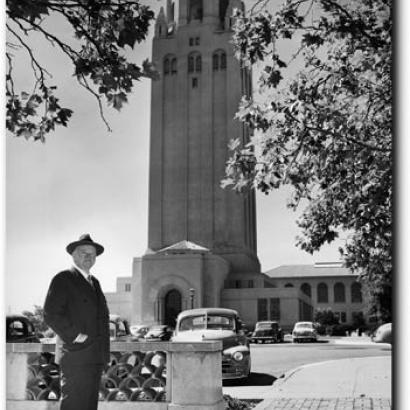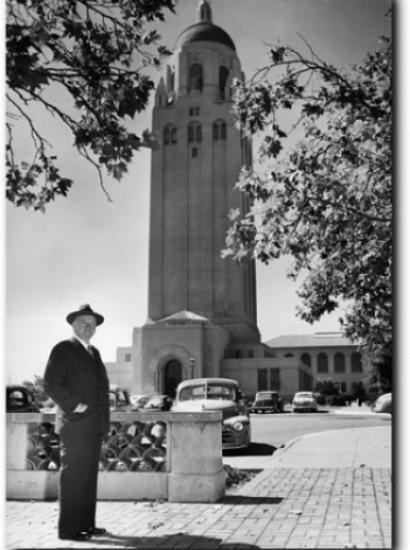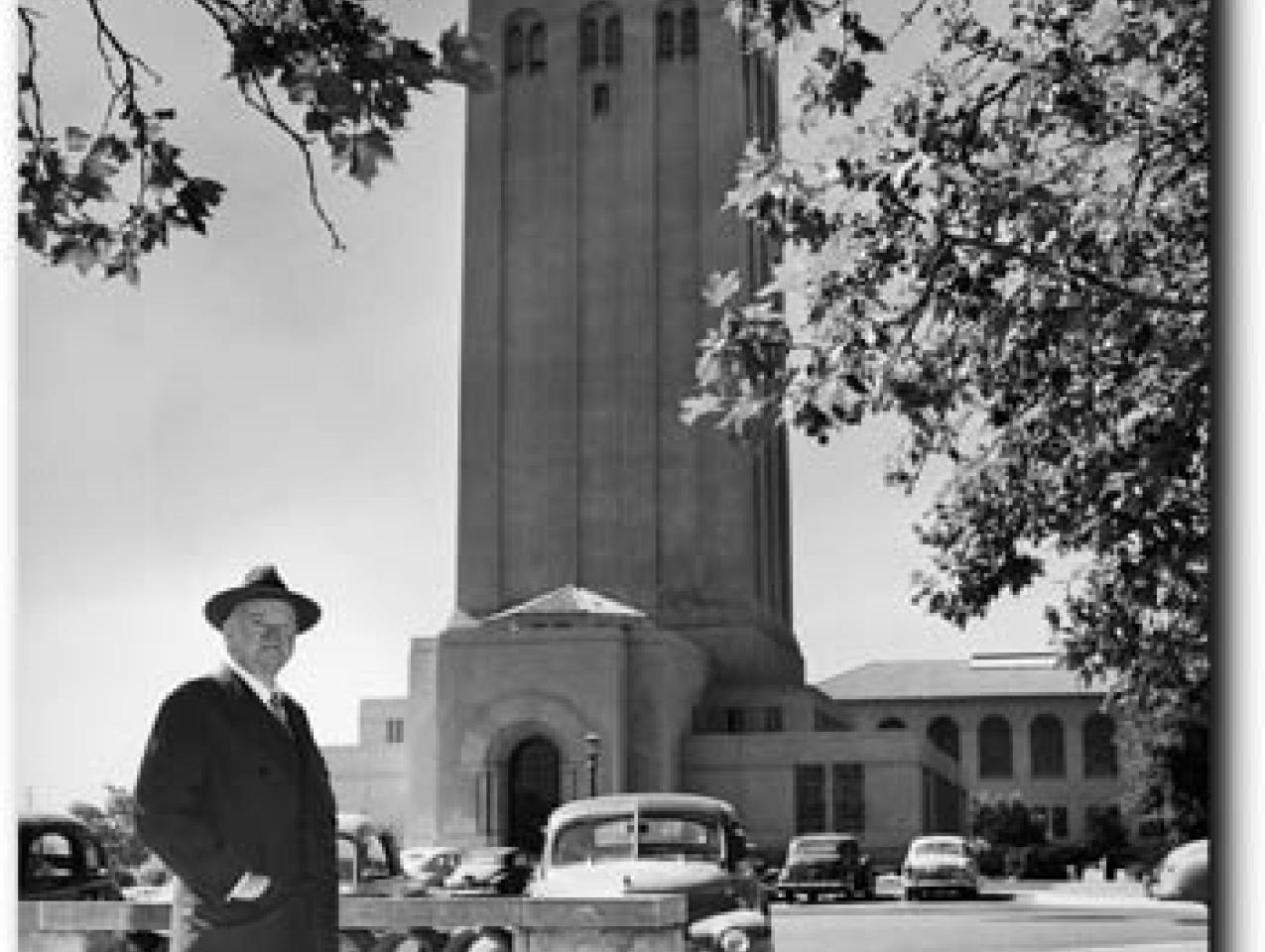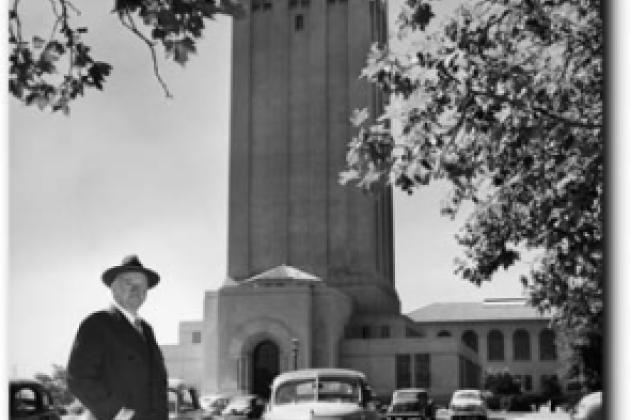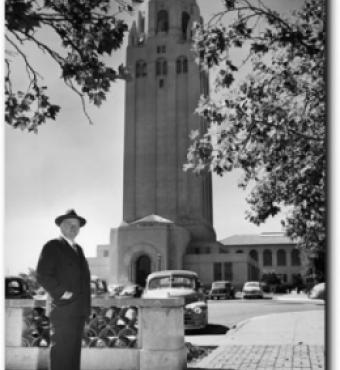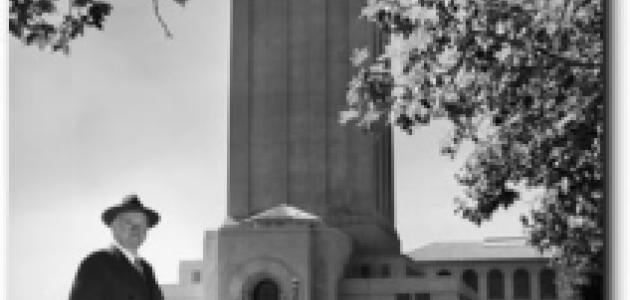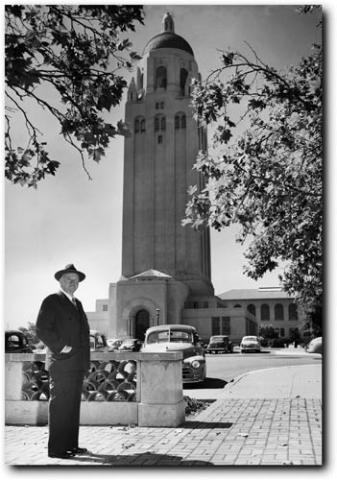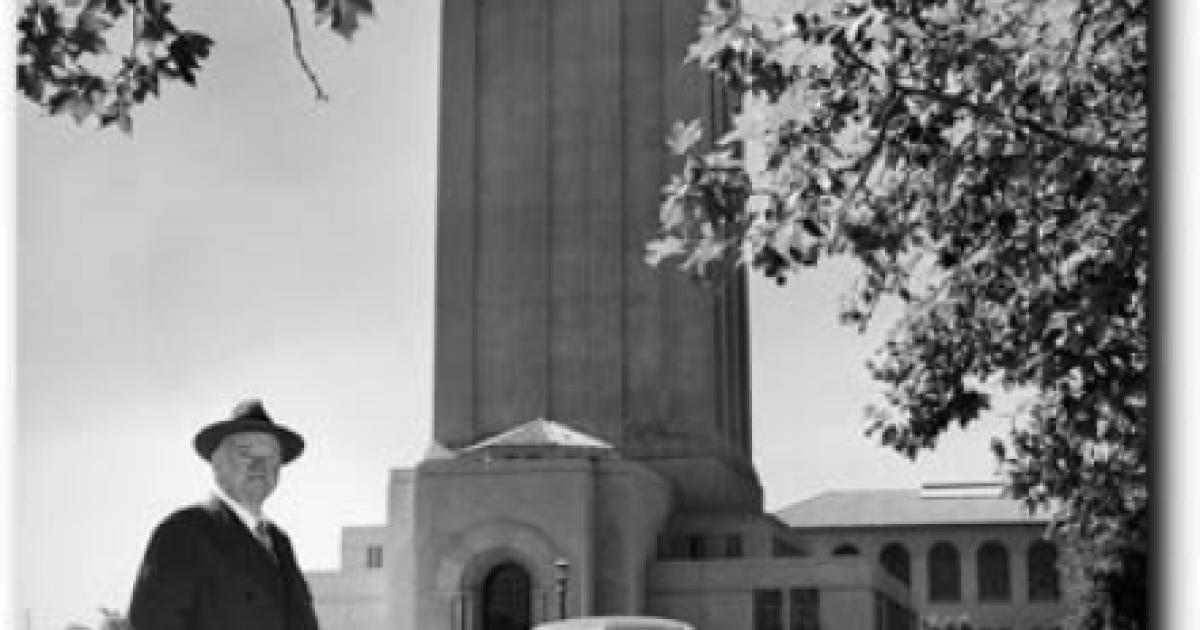This year marks the ninetieth anniversary of the Hoover Institution, originally known as the Hoover War Collection. A Revolutionary Place, an exhibit by the Hoover Institution Library and Archives that traces the institution's history from 1919 to today, opened June 30 in the Hoover Memorial Exhibit Pavilion. Through photographs, memorabilia, documents, books, and audiovisual materials, the exhibit highlights the institution's unique place and influence in the academic and political worlds.
The institution has changed its name several times since its beginnings as a special collection within the Stanford Library, but from its foundation it has played an indispensable role in promoting the understanding of social, political, and economic changes in the twentieth century and now the twenty-first. In its pioneering collecting efforts, in its library organization and the publication of primary sources, and in bringing together the pre-eminent scholars in many disciplines for collaboration and research, Hoover has been a trailblazing enterprise from its earliest days.
When World War I broke out in August 1914, Herbert and Lou Henry Hoover were in London organizing relief and transportation for Americans fleeing Europe. Their successful efforts motivated the U.S. ambassador to Britain to ask Herbert Hoover to organize the Commission for Relief in Belgium (CRB) to feed the starving Belgian citizens trapped by the German blockade of their country. That ambitious task provided food, medicine, and clothing to millions of Belgians for the duration of the war. In 1917, Hoover was appointed head of the U.S. Food Administration by President Wilson. Immediately after the war, from November 1918 through 1919, as the director general of the American Relief Administration (ARA), Hoover coordinated humanitarian relief on a monumental scale to northern France, Germany, Poland, and even the Soviet Union.
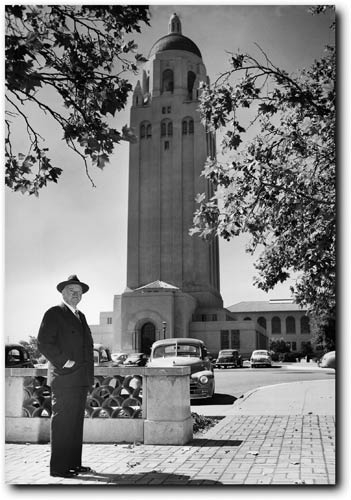
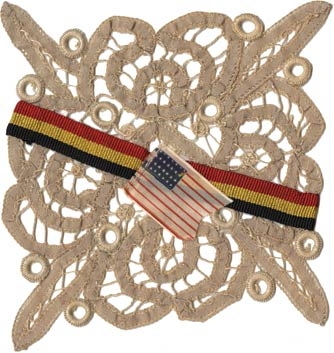
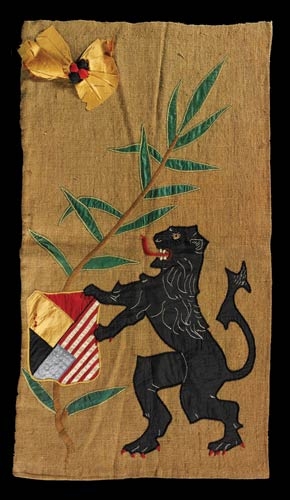
During his humanitarian endeavors, Hoover began to appreciate the value of not only documenting the work of the CRB but also collecting historical materials related to the war. In 1915, E. D. Adams, a Stanford history professor and friend of Hoover's, suggested he donate the records of the CRB to his alma mater, given their immense value as the documentary record of an organization unprecedented in scope and mission. Adams's suggestion, which he offered to the "Chief" more than once during the war, may have helped Hoover formulate a far more ambitious plan: to begin a special library collection on the Great War.
It all began with a telegram in which Herbert Hoover offered to donate $50,000 to send a "mission to Europe to collect historical material on war."
On April 23, 1919, Lou Henry Hoover received a telegram from her husband stating that if Adams and Stanford's president, Ray Lyman Wilbur, kept the matter confidential, he would donate $50,000 to send a "mission to Europe to collect historical material on war." Adams and Wilbur were not sure whether Hoover meant only his CRB materials or envisioned something more substantial. After seeking clarification, Adams and Wilbur received a second telegram on May 15 succinctly stating that "my idea is simply collect library material on war generally." Within a week, Adams was bound for Paris, where he conferred with Hoover, who re-emphasized his desire to develop a comprehensive historical record of the war with a particular emphasis on socioeconomic conditions. Soon a network of ARA personnel would fan across Europe to acquire materials.
In the coming months and years, several discerning collectors would spearhead the development of the Hoover War Collection. The first person Adams contacted after speaking to Hoover was Ralph Haswell Lutz, a former student and a member of Stanford's class of 1906, who was then stationed in Berlin as a first lieutenant with the American Expeditionary Force. In peacetime Lutz was a history professor at the University of Washington; he had also been a guest lecturer at Stanford. When America declared war on Germany in 1917, Lutz volunteered.
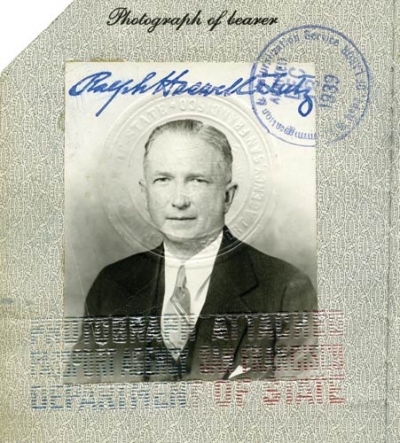
Adams, who corresponded with Lutz over the years, met with him in Berlin in July 1919. Using Hoover's influence as head of the ARA, Adams was able to engage Lutz as a collector until December, when he returned to his teaching duties. Lutz would ultimately be affiliated with the Hoover library until his death in 1968, spearheading successful acquisitions efforts for the fledgling collection that were well beyond the expectations of Hoover and Adams.
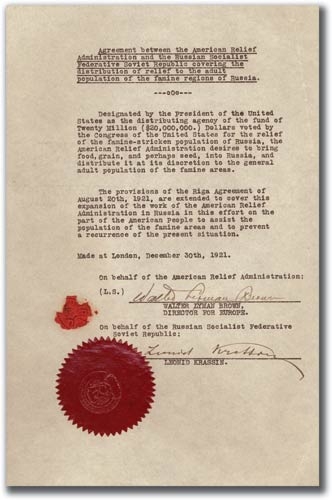
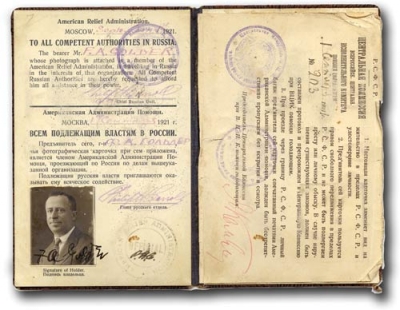
Lutz's first collecting trip sent him across Europe, where he contacted book dealers, government officials, diplomats, presidents, chancellors, military officers, and private citizens in a herculean effort to collect the records of the Great War. In three months he traveled through France, Germany, Poland, Czechoslovakia, Austria, Hungary, Yugoslavia, Bulgaria, Italy, Switzerland, and England. Among the primary sources he was able to collect were government documents, periodicals, newspapers, pamphlets, posters, photographs, monographs, and ephemeral materials that might otherwise have been lost. Crucial factors in Lutz's success were his congenial disposition, facility with languages, and unrelenting focus. His first European collecting trip laid the groundwork for the Hoover War Collection's renown. Lutz's contacts and this newly gained reputation ensured a steady flow of packages, bundles, and boxes to Stanford.
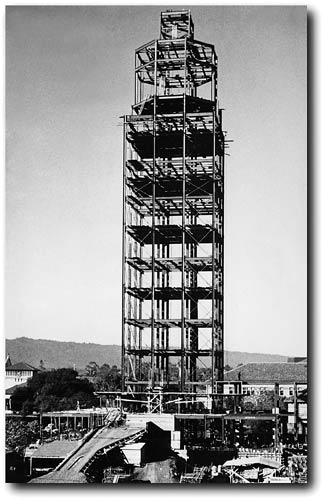
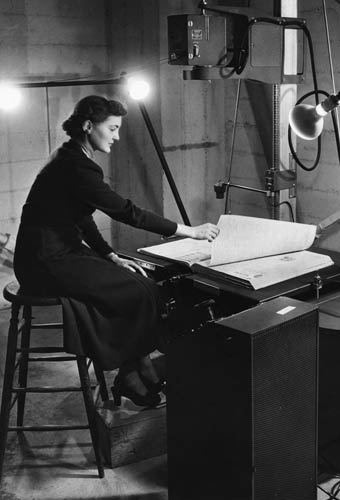
Because Hoover explicitly directed that his collection be a distinct entity at Stanford, Hoover War Collection administrators refused to incorporate their materials into the general library.
In the summer of 1920, Lutz accepted a professorship at Stanford and began his dual role as educator and administrator of the Hoover War Collection. When in 1925 Adams fell ill and was forced to reduce his teaching load and his involvement with the library, Lutz assumed the chairmanship. Throughout Lutz's tenure certain faculty members and librarians at the main library, where the collection was first housed, made frequent attempts to take control of it. Because Hoover explicitly directed in 1919 that his collection be a distinct entity at Stanford, however, neither Lutz nor his successors would concede to incorporating the collection into the general library. By 1925, the War Collection was taking up 20 percent of the library, making not only jurisdiction but also space a point of contention with university librarian G. T. Clark and his successor, Nathan van Patten. The space conflict would not be resolved until the Hoover Tower was completed in 1941.
Lutz went on additional collecting missions in 1926, 1933, and 1939, experiencing firsthand the monumental social, economic, and political unrest occurring in Europe. He saw the peace terms of the Treaty of Versailles dissolving in conflicts, which culminated in the Nazi-Soviet collaboration that set off World War II. Lutz knew it was critical to continue collecting the historical records of the 1930s, the background to the dramatic, tragic changes on the world scene. Thanks to Lutz's devotion to historical research and analysis, Hoover's collections on this period are unmatched.
The Hoover Institution's success to date has been a product of the dedication and professionalism of several generations of directors, curators, fellows, and staff. From the early adventures of the first collectors to the policy-shaping scholarship of its fellows and its dedication to original research, Hoover has always stood out among academic institutions. Forty-five years after the passing of its founder, and ninety years after its founding, Hoover is as dynamic an enterprise as ever.








